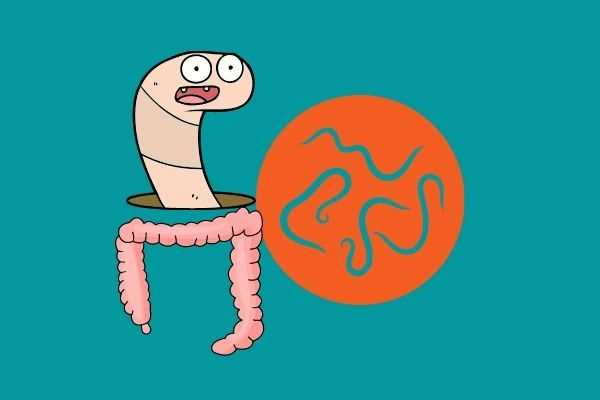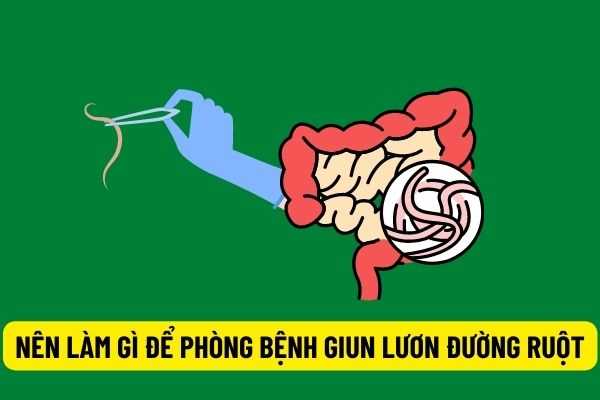Intestinal strongyloidiasis in Vietnam: How to prevent it? Treatment guidelines according to the advice of the Ministry of Health?
How to treat Intestinal strongyloidiasis in Vietnam?
According to Section 5 of the enclosed Instructions Decision 1384/QD-BYT in 2022 guiding the diagnosis, treatment and prevention of Intestinal strongyloidiasis in Vietnam stipulates the treatment of this disease as follows:
5. TREATMENT
"5.1. Principles of treatment
- Treatment with special drugs effective for killing strongyloidiasis such as ivermectin, albendazole, thiabendazole
- Treat symptoms with antihistamines, anti-digestive drugs, analgesics,...
- Stop or reduce immunosuppressive therapy (if any) )
- Improve physical condition, treat comorbidities
5.2. Specific treatment
Use one of the following regimens
5.2.1 Regimen 1: Ivermectin tablets 3mg, 6mg
a) Dosage
- Body Common diseases: children over 15kg and adults: 0.2 mg/kg body weight, used for 1-2 days, taken 2 hours apart from meals
- Severe disease, disseminated strongyloidiasis: Dosage 0. 2mg/kg/day orally until stool and/or sputum tests no longer show strongyloidiasis larvae, can be treated within 2 weeks
b) Contraindication
- Patients with hypersensitivity to any component ofdrugs
- Patients with diseases The disease is accompanied by blood-brain barrier disorders and meningitis.
- Children under 5 years old or body weight < 15kg
- Pregnant and lactating women.
5.2.2. Regimen 2: Albendazol tablets 400 mg or 200 mg
a) Dosage
- Normal form:
+ Adults: 400mg/time X 2 times/day for 7 consecutive days.
+ Children > 2 years old: 400mg/time/day for 3 consecutive days.
+ Children < 2 years old: 200mg/time/day for 3 consecutive days, can be repeated after 3 weeks.
- Severe form of disease, complicated by disseminated strongyloidiasis: 400mg/time x 2 times/day for 7 days. Test to monitor strongyloidiasis larvae for 2-4 weeks, if there are larvae, continue with 1 course of treatment as before.
b) Contraindications
- There is a history of hypersensitivity to benzimidazol-type compounds or certain components of the drug.
Patients with a history of bone marrow toxicity.
- Women who are pregnant in the first 3 months or are breastfeeding.
- Children under 2 years old.
5.2.3. Regimen 3: Thiabendazol tablets 500 mg
a) Dosage: 25mg/kg/time X 2 times/day (maximum 3g/day). Drink after eating.
- For common disease: 2 days treatment.
- For disseminated strongyloidiasis: treatment lasts at least 5-7 days or until the larvae are clear.
b) Contraindications
- In cases of hypersensitivity to any ingredient of the drug.
- Pregnant and lactating women.
- Pediatric patients weighing < 13.6 kg.
5.3. Treatment of symptoms
- Improve physical condition, have a reasonable diet and rest.
- If the patient has gastrointestinal disorders, diarrhea must be treated with fluids to restore water and electrolytes.
- If there are signs of infection, it must be treated with antibiotics.
- If there are signs of itching, use an antihistamine.
- Treatment of comorbidities.
5.4. Post-treatment
follow-up - Inpatient monitoring:
+ Patients are monitored at an inpatient facility for about 7 days.
+ Re-test the stool in 3 days on the 5th, 6th, 7th day of inpatient treatment, complete blood count test, biochemical liver function, kidney function to assess the body's organ function.
+ For patients with underlying diseases, do tests to monitor and treat related underlying diseases.
- Follow-up after inpatient treatment:
Indicators to evaluate the effectiveness of treatment, after 1 month, 3 months, 6 months and 12 months of treatment.
+ Clinical: clinical symptoms decrease or
disappear + Test of stool or duodenal fluid or sputum no longer has strongyloidiasis larvae
+ Blood count: eosinophil count returns to normal or decreases
+ Biochemistry: function Liver and kidney function
+ Strongyloidiasis ELISA, IgE re-evaluated after 3 months, 6 months, 12 months and longer if still positive.
+ Abdominal ultrasound: the small bowel loop wall returned to normal.
+ CT scan, MRI of the brain: lesions are reduced or eliminated."

Intestinal strongyloidiasis in Vietnam: How to prevent it? Treatment guidelines according to the advice of the Ministry of Health?
Intestinal strongyloidiasis in Vietnam
with Decision 1384/QD-BYT in 2022 guiding the diagnosis, treatment and prevention of iIntestinal strongyloidiasis in Vietnam stipulates the criteria for cure of this disease as follows:
- No clinical symptoms.
- Examination of stool, duodenal fluid, bronchial lavage or sputum: no strongyloidiasis larvae were detected.
How to prevent Intestinal strongyloidiasis in Vietnam?
Pursuant to Section 7 of the Guide issued together Decision 1384/QD-BYT in 2022 guiding the diagnosis, treatment and prevention of Intestinal strongyloidiasis in Vietnam stipulates the prevention of this disease as follows:
"7. PREVENTION
7.1. For individuals
- Personal hygiene, eating and drinking hygienically, not defecating indiscriminately;
- Taking labor protection measures in daily activities, especially those who often come into contact with soil while working, should wear gloves, shoes, and walkers. -
People with suspected symptoms of strongyloidiasis should see a specialist to be tested and identified
- Improve the body's resistance, eat a lot of fresh vegetables and fruits, exercise daily sports
7.2 For the community
- Propaganda and education on health related to disease transmission and improve health knowledge among the masses
- Reasonable faecal disposal such as building hygienic latrines, Good manure management
- Good environmental hygiene"
LawNet
